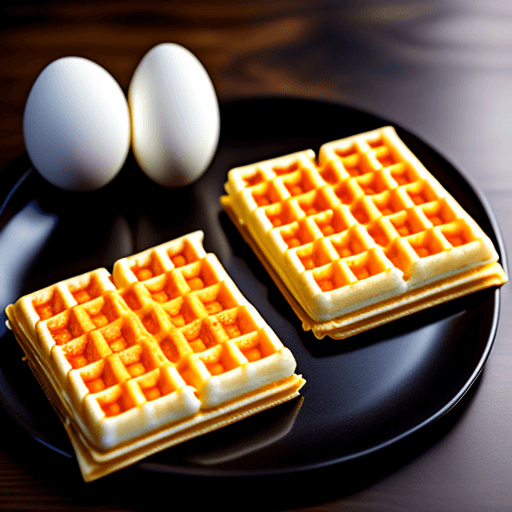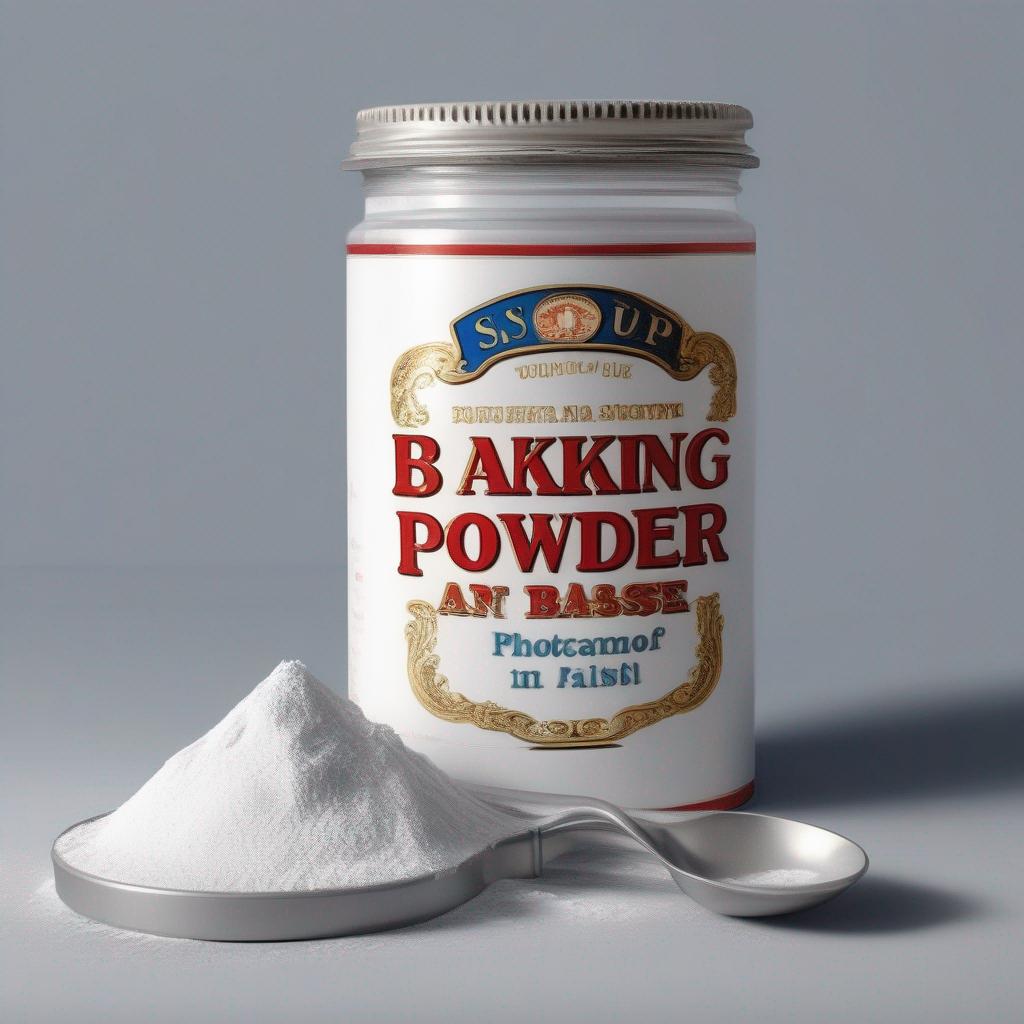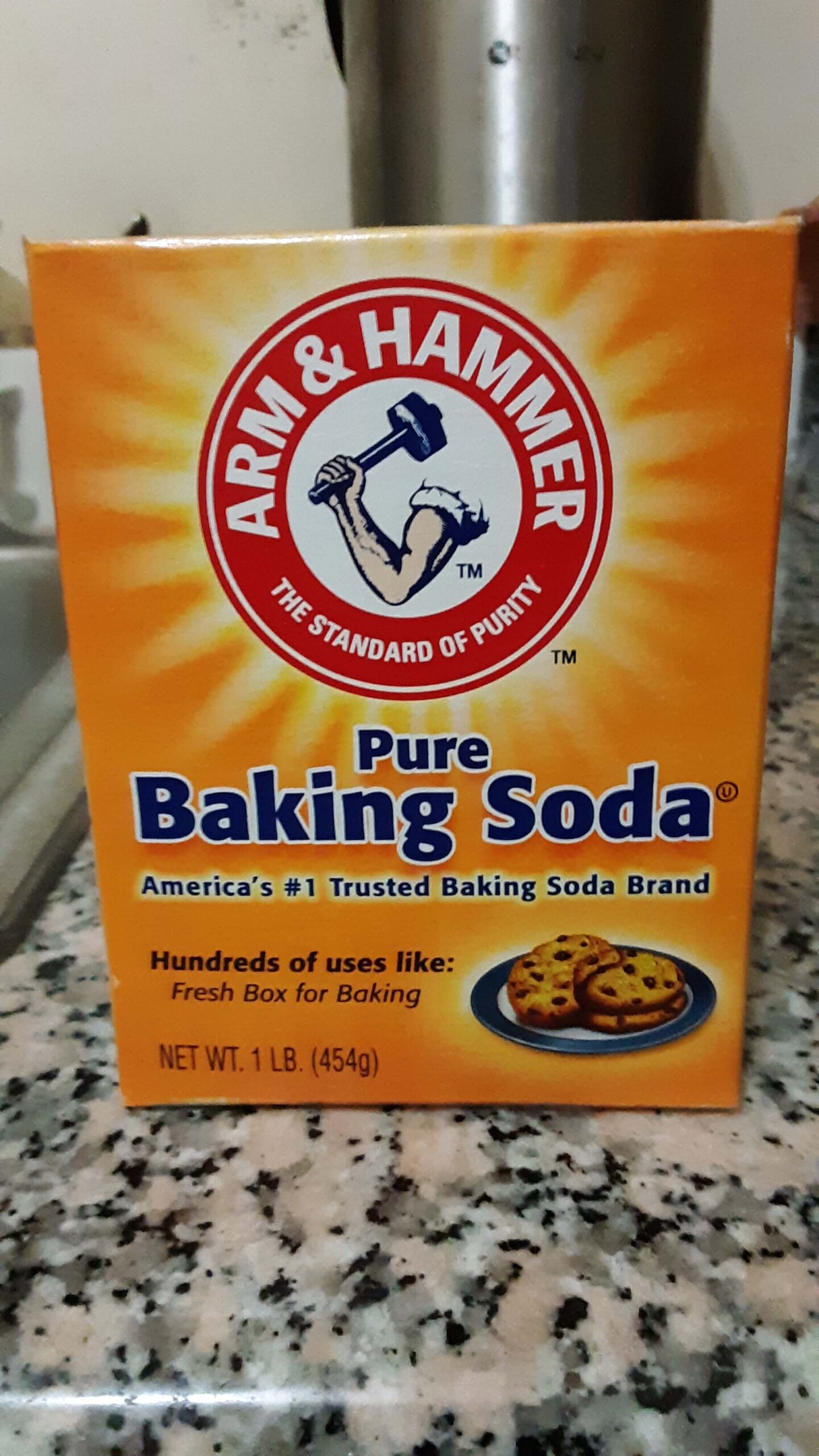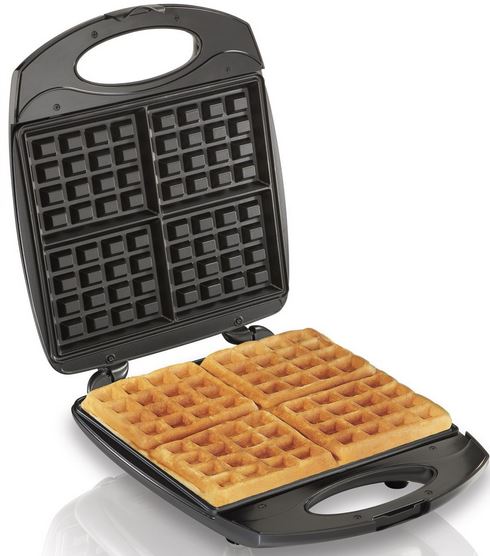This article will examine the differences between nutritional yeast and active dry yeast and determine which one is better to use for your next batch of waffles.
To begin with, it’s important to understand the role that yeast plays in creating those airy pockets of goodness in your waffles. Yeast is a microorganism that reacts with sugars in the batter, producing carbon dioxide gas as a byproduct. This gas gets trapped in the gluten structure of the batter, causing it to rise and giving your waffles their characteristic light and fluffy texture.
But not all yeasts are created equal when it comes to flavor and activation process. Nutritional yeast offers a unique cheesy flavor profile that can add depth to your waffles, while active dry yeast requires specific activation before use. Both have their merits, but which one is truly superior?
Let’s look deeper into the nuances of each type of yeast and find out!
Table of Contents
- 1 Understanding the Role of Yeast in Waffles
- 2 Differentiating Nutritional Yeast and Active Dry Yeast
- 3 Flavor Profile of Nutritional Yeast
- 4 Activation Process of Active Dry Yeast
- 5 Impact on Waffle Texture
- 6 Nutritional Benefits of Nutritional Yeast
- 7 Shelf Life and Storage Considerations
- 8 Availability and Cost Comparison
- 9 Vegan and Vegetarian Considerations
- 10 Baking Tips for Using Nutritional Yeast
- 11 Baking Tips for Using Active Dry Yeast
- 12 Experimenting with Different Yeast Combinations
- 13 Frequently Asked Questions
- 14 Conclusion
Understanding the Role of Yeast in Waffles
To understand the role of yeast in waffles, you must grasp its importance in creating a light and fluffy texture. Yeast is a key ingredient in waffle batter as it acts as a leavening agent. It helps to make the waffles rise by producing carbon dioxide gas through fermentation. This process creates air bubbles that give the waffles their characteristic airy and tender texture.
There are different types of yeast that can be used in waffle recipes, but two common ones are nutritional yeast and active dry yeast. Nutritional yeast is often used as a flavor enhancer and source of nutrients, rather than for its leavening properties. On the other hand, active dry yeast is specifically designed for baking purposes and is more commonly used to make breads and other baked goods rise.
While nutritional yeast may be an alternative option for adding flavor to your waffles, it will not provide the same leavening effects as active dry yeast so you will have to use other leavening agents such as baking powder or baking soda to achieve the desired texture.
Some recipes utilize chemical leaveners like baking powder or baking soda instead of yeast. These alternatives can still yield delicious results with a lighter texture similar to those made with traditional yeasted batters.
In terms of health benefits, both nutritional yeast and active dry yeast have their advantages. Nutritional yeast is known for being rich in B vitamins, protein, and minerals like zinc and magnesium. Active dry yeast also contains some nutrients but not at the same level as nutritional yeast. However, it’s important to note that consuming large amounts of either type of yeast may not be beneficial for everyone, particularly those with certain health conditions like Candida overgrowth or sensitivities to yeasts.
Understanding the role of different types of yeasts in waffle recipes is essential for achieving the desired texture. While nutritional yeast can add flavor and nutrients to your waffles, it may not provide the same leavening effects as active dry yeast. Consider using alternative leavening agents if you opt for nutritional yeast. Also be mindful of your individual health needs when incorporating yeasts into your diet.
Differentiating Nutritional Yeast and Active Dry Yeast
Differentiating between the two types can help you decide which one to use in your waffle recipe. Nutritional yeast and active dry yeast have distinct differences when it comes to flavor, health benefits, cooking techniques, and their uses in other recipes. Now I will discuss these differences to make an informed decision.
When it comes to flavor comparison, nutritional yeast stands out with its cheesy and nutty taste. It adds a savory element to dishes and is often used as a vegan substitute for cheese due to its unique flavor profile. On the other hand, active dry yeast doesn’t contribute much flavor on its own but helps create a light and airy texture in waffles.
Nutritional yeast outshines in terms of health benefits due to its rich supply of crucial B vitamins including thiamine, riboflavin, niacin, and folate. These vitamins play a crucial role in energy production and support overall brain function. Also nutritional yeast is a complete protein source containing all nine essential amino acids. Active dry yeast doesn’t offer the same nutritional value as it undergoes processing that removes most of its nutrients.
When it comes to cooking techniques and versatility, active dry yeast is more commonly used in baking recipes like waffles due to its ability to leaven doughs by producing carbon dioxide gas. However, if you’re looking for alternatives or don’t have access to active dry yeast, there are options such as using baking powder or soda instead. Nutritional yeast can be used differently; it’s often added as a seasoning or topping after the waffles are cooked for an extra burst of flavor.
While both types of yeasts serve different purposes in waffle recipes, understanding their differences allows you to choose based on your preferences and dietary needs. If you’re looking for enhanced flavors with added health benefits, incorporating nutritional yeast into your waffle batter might be worth considering. Otherwise, sticking with traditional active dry yeast will still yield delicious results. Experimenting with different yeast alternatives can also lead to exciting discoveries in other recipes, such as bread or pizza doughs.
Flavor Profile of Nutritional Yeast
The flavor profile of nutritional yeast is often described as cheesy and nutty, making it a popular choice for adding a savory element to various dishes. The unique taste of nutritional yeast can be attributed to its high levels of glutamic acid, which is responsible for creating umami flavors in foods. This makes nutritional yeast a versatile ingredient that can enhance the taste of many different recipes.
In addition to its delicious flavor, nutritional yeast also offers several health benefits. Nutritional yeast is a complete protein source that contains all nine essential amino acids needed for proper bodily function. Also nutritional yeast is packed with B vitamins, including vitamin B12, and can be challenging for vegans to acquire naturally. Cooking with nutritional yeast offers limitless possibilities, such as sprinkling it on popcorn or roasted vegetables for added flavor, blending it into sauces and dressings for a creamy texture, or using it as a substitute for cheese in vegan macaroni and cheese recipes.
So the flavor comparison of nutritional yeast and active dry yeast shows that they have very different profiles. While active dry yeast adds fermentation and rise to baked goods like waffles, nutritional yeast brings a cheesy and nutty taste that adds depth and umami flavors to various dishes.
Activation Process of Active Dry Yeast
If you want fluffy and delicious waffles, activating the dry yeast is crucial for achieving the perfect rise. Yeast activation refers to the process of waking up dormant yeast cells before adding them to your waffle batter. This step is essential because it allows the yeast to start fermenting and producing carbon dioxide, which creates air pockets in the dough and gives your waffles their light and airy texture.
To activate dry yeast, you need to follow a few simple steps. First, dissolve the yeast in warm water or milk at a temperature between 105°F and 110°F (40°C – 43°C). The warm liquid helps awaken the yeast from its dormant state. Next, add a small amount of sugar or honey to feed the yeast and promote fermentation. Stir gently until everything is well combined, then let it sit for about 5-10 minutes. During this time, you should see some bubbles forming on top of the mixture, indicating that the yeast is active and ready to be added to your waffle batter.
The activation time for dry yeast can vary depending on factors such as room temperature and humidity levels. Typically, it takes about 5-10 minutes for the yeast to get going and begin fermenting properly. But if you don’t see any bubbles forming within that time, it might mean that your yeast is no longer good and you should get a new batch. Also, be careful not to use water or milk that’s too hot because it can actually kill the yeast instead of waking it up.
Activating dry yeast plays a vital role in creating fluffy and delicious waffles. By following the proper yeast activation steps, such as dissolving the yeast in warm liquid and waiting for bubbles to form, you ensure that the yeast is active and ready to work its magic in your waffle batter.
Impact on Waffle Texture
To achieve the perfect waffle texture, you’ll want to activate your dry yeast properly by following the activation steps and allowing enough time for it to work its magic. Properly activated yeast is essential for creating light and fluffy waffles with a crisp exterior.
Here are three crucial factors that can impact the texture of your waffles:
-
Yeast fermentation: When yeast is activated, it begins to ferment, producing carbon dioxide gas that creates air bubbles in the batter. These air bubbles give the waffles their light and airy texture. If the yeast is not properly activated, fermentation may be incomplete, resulting in dense and heavy waffles.
-
Yeast substitutes: While nutritional yeast can add a pleasant cheesy flavor to your waffles, it doesn’t have the same leavening properties as active dry yeast. Therefore, if you’re aiming for optimal texture, it’s best to stick with active dry yeast.
- Yeast ratios and moisture: The amount of yeast used in relation to other ingredients plays a crucial role in achieving the desired texture. Too little yeast may result in flat and dense waffles, while too much can make them overly yeasty or cause them to rise too quickly and collapse during cooking. Also maintaining an appropriate level of moisture in the batter is important for proper fermentation and ideal texture.
By following these guidelines for activating dry yeast and considering factors such as fermentation, substitutes, ratios, and moisture levels when making your waffle batter, you can ensure that your waffles turn out perfectly crispy on the outside while remaining light and fluffy on the inside. Experimentation may be necessary to find the right balance that suits your personal preferences, but understanding these principles will help guide you towards achieving those delicious results every time you make waffles!
Nutritional Benefits of Nutritional Yeast
One can appreciate the nutritional benefits that come from incorporating nutritional yeast into their diet.
Nutritional yeast is a great source of protein and fiber and it also contains essential B vitamins such as B12. This makes nutritional yeast particularly beneficial for vegans and vegetarians who may struggle to meet their B12 needs.
There are numerous ways to utilize nutritional yeast in cooking. One can enhance the taste and nutrition of popcorn or roasted vegetables by sprinkling it on top. Moreover, nutritional yeast serves as a vegan alternative to cheese, providing a cheesy seasoning to dishes such as macaroni and cheese or nachos. Also it can be combined with plant-based milk or oil to create dairy-free sauces or dressings.
For those who cannot find nutritional yeast or are looking for substitutes, there are alternatives available. Brewer’s yeast is one option that provides similar flavors and nutrients. However, if you’re unable to find either nutritional yeast or brewer’s yeast, you can try using miso paste or soy sauce as substitutes for the umami flavor that nutritional yeast provides.
Shelf Life and Storage Considerations
When storing nutritional yeast, it’s important to consider its shelf life and proper storage conditions. Properly storing nutritional yeast can help extend its freshness and maximize its lifespan.
Here are some best practices for storing yeast:
-
Keep it in a cool, dry place: Moisture can cause the yeast to clump together and lose its effectiveness. It’s best to store nutritional yeast in an airtight container in a cool, dry pantry or cupboard.
-
Avoid exposure to light: Light can degrade the quality of nutritional yeast over time. To maintain its freshness, store it in an opaque container or keep it away from direct sunlight.
-
Seal tightly after each use: When you’re done using nutritional yeast, make sure to seal the container tightly. This will prevent air from entering and prolong the shelf life of the yeast.
- Check for any signs of spoilage: Before using nutritional yeast, always check for any signs of spoilage such as mold or an off smell. If there are any indications that the yeast has gone bad, it’s best to discard it.
By following these proper storage techniques, you can ensure that your nutritional yeast stays fresh for longer periods of time. Taking care of your stored ingredients not only helps maintain their quality but also enhances your overall culinary experience.
Availability and Cost Comparison
Now that we’ve discussed the shelf life and storage considerations of nutritional yeast and active dry yeast, Now I will discuss the availability and cost comparison between these two types of yeast.
As someone who loves making waffles, I’m always on the lookout for affordable yet nutritious ingredients to enhance my breakfast experience.
When it comes to availability, active dry yeast is widely accessible in most grocery stores. It is a pantry staple for many baking enthusiasts and can be found in both small packets or larger containers.
On the other hand, nutritional yeast may not be as readily available in all stores. While it can still be found in many health food shops or specialty stores, you might have to do a bit of searching if your local supermarket doesn’t carry it. However, with the rising popularity of plant-based diets, more stores are starting to stock nutritional yeast due to its use as a cheese substitute for vegans.
Moving on to cost comparison, active dry yeast tends to be more budget-friendly compared to nutritional yeast. This is primarily because active dry yeast is used solely for leavening purposes in baking and has a longer shelf life when stored properly.
Nutritional yeast, on the other hand, offers additional nutritional benefits such as being rich in B vitamins and protein while also adding a cheesy flavor to dishes. These added benefits contribute to its slightly higher price point.
Both nutritional yeast and active dry yeast have their own unique attributes when it comes to availability and cost. If convenience is important to you or if you’re looking for an affordable option without specific dietary considerations, active dry yeast would be the way to go.
However, if you’re following a vegan diet or seeking additional nutritional benefits like B vitamins and protein in your waffle recipe at a slightly higher cost point, then incorporating nutritional yeast might be worth considering.
So the choice between these two yeasts depends on your personal preferences and dietary needs. It’s recommended to consult with a healthcare professional or nutritionist to determine the best option for your specific dietary requirements.
Vegan and Vegetarian Considerations
For those following a vegan or vegetarian diet, incorporating yeast into your recipes can add a delicious umami flavor to your dishes. Nutritional yeast, in particular, is a popular choice for its rich cheesy flavor and versatility. It’s commonly used as a plant-based alternative to cheese in various recipes.
Not only does it enhance the taste of your meals, but nutritional yeast also provides essential nutrients such as protein and B vitamins, making it a great addition to any meat-free diet. One of the main benefits of using nutritional yeast in waffle recipes is its high protein content. As a vegan protein source, nutritional yeast contains all nine essential amino acids that our bodies need but cannot produce on their own.
By including nutritional yeast in your waffles, you can ensure that you’re getting a decent amount of plant-based protein while enjoying a tasty breakfast. In addition to its protein content, nutritional yeast offers other health benefits as well. It’s often fortified with vitamin B12, which is vital for vegans and vegetarians since this nutrient is primarily found in animal products. Vitamin B12 supports nerve function and helps prevent anemia, making it crucial for overall health. Also nutritional yeast is low in fat and calories while being packed with fiber.
Incorporating this ingredient into your waffle recipe not only adds flavor but also contributes to a well-rounded and nutritious meal. If you’re looking for recipe ideas using nutritional yeast in waffles, there are plenty of options available! You can create savory waffles by adding ingredients like spinach or sun-dried tomatoes along with the nutritional yeast for an extra burst of flavor. Alternatively, you can go for sweet variations by incorporating fruits like bananas or berries into the batter while still benefiting from the added nutrition provided by the yeast.
Baking Tips for Using Nutritional Yeast
To make the most of your baking experience with nutritional yeast, try incorporating it into your waffle batter for a flavorful twist. Nutritional yeast adds a savory, cheesy flavor to your waffles that can take them to the next level.
When using nutritional yeast in baking, there are a few techniques you can employ to ensure the best results. Firstly, when adding nutritional yeast to your waffle batter, be sure to mix it well with the dry ingredients before adding any liquids. This ensures that the yeast is evenly distributed throughout the batter and enhances its flavor in every bite. You might also consider tweaking the sugar or salt levels in your recipe based on the amount of nutritional yeast you include, as it can impart a mildly salty flavor.
Experimenting with different recipe variations can also be fun when using nutritional yeast in your waffles. You can try adding other herbs and spices like garlic powder or onion powder for an added depth of flavor. Alternatively, you could incorporate some chopped vegetables like spinach or bell peppers for a more nutritious twist. There are many options!
In terms of flavor pairings, nutritional yeast goes well with a variety of ingredients. It pairs particularly well with avocado and tomato for a delicious savory topping. You could also serve your waffles with some vegan cheese or plant-based butter for an extra creamy texture. Don’t be afraid to get creative and look at different flavor combinations!
In addition to enhancing the taste of your waffles, using nutritional yeast also provides several health benefits. It’s packed with essential nutrients such as protein, fiber, B vitamins, and zinc. Nutritional yeast is also naturally low in fat and sodium, making it a healthier alternative to traditional cheese-based recipes.
If you don’t have any nutritional yeast on hand or prefer not to use it in your waffles, there are substitution options available. You could try using grated vegan cheese instead for a similar cheesy flavor profile. Another option would be to use a combination of spices like turmeric and paprika to mimic the color and taste of nutritional yeast.
Incorporating nutritional yeast into your waffle batter can elevate their flavor and provide additional health benefits. By experimenting with baking techniques, recipe variations, and flavor pairings, you can create delicious waffles that are both nutritious and satisfying.
Baking Tips for Using Active Dry Yeast
To ensure proper activation of the active dry yeast in your baking, it is crucial to proof the yeast in warm water before adding it to the dough. This step ensures that the yeast is alive and active, which will help your baked goods rise properly.
To activate the yeast, simply dissolve it in warm water (around 110°F) with a little sugar. Wait for approximately 5-10 minutes until it turns foamy and starts bubbling. This indicates that the yeast is ready to be added to your dough.
Here are some tips for troubleshooting yeast activation:
- Make sure the water temperature is correct. Too hot or too cold can kill or slow down the yeast respectively.
- Use fresh yeast. Old or expired yeast may not activate properly.
- Check for proper storage of your yeast. You must store it in a cool and dry place within an airtight container.
- If you’re having trouble activating your yeast, try adding a pinch of sugar to give it extra food to feed on.
Yeast is not only essential for making waffles but also plays a crucial role in other baked goods like bread and pastries. It helps create a light and airy texture by producing carbon dioxide during fermentation. Yeast can also be used as a substitute for other leavening agents like baking powder or baking soda if you prefer its distinct flavor profile.
Also active dry yeast can be used in gluten-free baking as well. While gluten-free flours lack the structure provided by gluten, incorporating activated yeast helps create a more elastic dough and improves overall texture.
Understanding how yeast works can enhance your knowledge of fermentation processes in general. Yeast feeds on sugars present in dough, converting them into alcohol and carbon dioxide through fermentation. This process not only causes dough to rise but also contributes to flavor development.
Experimenting with Different Yeast Combinations
Combining various types of yeast can yield interesting and unique flavors in your baked goods. Experimenting with different yeast combinations allows you to look at a whole new world of taste possibilities.
By using a combination of nutritional yeast and active dry yeast, for example, you can create waffles that are not only delicious but also packed with nutrients.
One way to experiment with yeast combinations is by substituting a portion of the active dry yeast with nutritional yeast. Nutritional yeast adds a cheesy, nutty flavor to your waffles while still providing the necessary leavening properties. Start by using half the amount of active dry yeast called for in your recipe and replace the other half with nutritional yeast. This will give your waffles a hint of umami flavor that pairs perfectly with savory or sweet toppings.
Another option is to activate the nutritional yeast separately before adding it to the batter. Nutritional yeast is typically inactive, meaning it doesn’t have leavening properties on its own. To activate it, mix it with warm water and let it sit for about 10 minutes until it becomes frothy. Then, add this activated nutritional yeast mixture to your waffle batter along with the active dry yeast. This method ensures that both types of yeasts contribute their distinct flavors to the final product.
Incorporating different combinations of yeasts into your baking not only enhances the flavor profile but also adds depth and complexity to your creations. The key is finding the right balance between traditional leavening agents like active dry yeast and unique flavors provided by substitutes like nutritional yeast.
Frequently Asked Questions
Can I substitute nutritional yeast for active dry yeast in my waffle recipe?
Yes, you can substitute nutritional yeast for active dry yeast in your waffle recipe. While both types of yeast serve as leavening agents in baking, they have slightly different properties. Nutritional yeast is often used as a flavor enhancer and has a cheesy, nutty taste, making it a popular choice for vegan dishes.
On the other hand, active dry yeast is typically used to activate dough and create a rise during baking. When substituting nutritional yeast for active dry yeast in your waffle recipe, keep in mind that the texture and rise may be slightly different. However, the taste will be unique and add a savory element to your waffles.
So go ahead and experiment with this alternative if you’re looking for a twist on traditional waffles!
Is nutritional yeast a good source of protein and vitamins?
Nutritional yeast is indeed a good source of protein and vitamins. It is particularly popular among vegans as a plant-based protein source. Nutritional yeast is known for its high protein content, with about 2 tablespoons providing around 9 grams of protein.
Also it contains all nine essential amino acids that our bodies need. Also nutritional yeast packs a punch with a variety of vitamins and minerals. These include essential B vitamins like B12 (crucial for vegans), as well as zinc, selenium, and iron.
As for recipes and uses, nutritional yeast can be sprinkled on top of popcorn or salads for added flavor or used to make vegan ‘cheese’ sauces or dressings.
How long can I store nutritional yeast, and what is the best way to store it?
Storing nutritional yeast properly is essential to maintain its freshness and maximize its shelf life. To preserve nutritional yeast, it’s important to store it in a cool, dry place away from direct sunlight and moisture. A pantry or cupboard is an ideal spot for keeping nutritional yeast.
It’s best to transfer the yeast into an airtight container or resealable bag to prevent air exposure and keep it fresh for longer.
The shelf life of nutritional yeast can vary, but it generally ranges from one to two years if stored correctly.
By following these simple steps, you can ensure that your nutritional yeast stays flavorful and nutrient-rich for an extended period of time.
Is there a noticeable difference in taste between waffles made with nutritional yeast and those made with active dry yeast?
There is a noticeable difference in taste between waffles made with nutritional yeast and those made with active dry yeast. Nutritional yeast, which is commonly used in vegan cooking, has a unique cheesy and nutty flavor that adds depth to dishes. It also offers several health benefits, as it’s packed with essential nutrients like B vitamins, protein, and fiber.
While active dry yeast provides the traditional yeasty flavor to waffles, nutritional yeast can elevate the taste profile by adding a savory umami element. It’s important to note that nutritional yeast can’t replace active dry yeast when it comes to leavening bread or other baked goods. However, if you’re looking for an alternative way to incorporate nutritional yeast into your diet and look at different uses for it beyond its health benefits, using it in waffle batter can be a delicious option.
To incorporate nutritional yeast into your diet more generally, you can sprinkle it on popcorn or roasted vegetables, blend it into sauces or dressings for added creaminess and flavor, or use it as a topping for pasta dishes.
So the choice between using nutritional yeast or active dry yeast in waffles depends on your personal preference and dietary needs.
Can I use a combination of nutritional yeast and active dry yeast in my waffle recipe to enhance flavor and texture?
Yes, you can definitely use a combination of nutritional yeast and active dry yeast in your waffle recipe to enhance both the flavor and texture. Nutritional yeast brings a unique cheesy and nutty flavor to the waffles, while active dry yeast helps with the rise and fluffiness. Combining these two types of yeast allows you to enjoy the benefits of both.
If you don’t have nutritional yeast on hand, you can also experiment with other yeast substitutes like brewer’s yeast or even plain old baking powder. It’s important to note that nutritional yeast isn’t a direct substitute for active dry yeast when it comes to leavening.
In terms of nutritional value, both nutritional yeast and active dry yeast are excellent sources of B vitamins and protein. When comparing taste, waffles made with nutritional yeast tend to have a richer, more savory flavor compared to those made with just active dry yeast.
Storage tips for both types of yeasts include keeping them in an airtight container in a cool, dark place or even storing them in the freezer for longer shelf life.
Conclusion
Also both nutritional yeast and active dry yeast have their own unique qualities when it comes to making waffles. Nutritional yeast adds a savory, cheesy flavor that can be especially appealing for those following a vegan or vegetarian diet.
On the other hand, active dry yeast helps create a light and fluffy texture in waffles through its activation process.
While nutritional yeast may not provide the same rising effect as active dry yeast, it can still be used in combination with other yeasts to experiment with different flavors and textures. By using both types of yeasts together, one can achieve a balance between taste and texture in their waffles.
So the choice between nutritional yeast and active dry yeast depends on personal preference and dietary restrictions. Whether you’re looking for a subtle cheesy flavor or a traditional fluffy texture, there are options available for everyone. So go ahead, get creative in the kitchen, and enjoy delicious homemade waffles that suit your taste buds perfectly!





